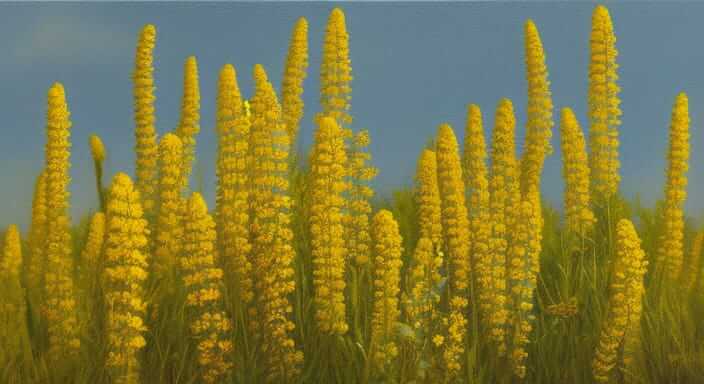Explore the uses and benefits of yellow rattle (Rhinanthus minor), from its role in ecosystem restoration to natural pest control. Learn how to cultivate this sun-loving plant and enhance biodiversity in your surroundings.

Yellow Rattle; the common name of several species of plants belonging to the genus Rhinanthus (called Alectorolophus by some botanists), of the figwort family Scrophulariaceae. The generic name, from Greek rhis (snout) and anthos (flower), refers to the beaked upper corolla lip of a species no longer included by botanists in the genus Rhinanthus. The sessile flowers (usually yellow) are borne in the axils of the uppermost bracts of the stems, which bear opposite leaves. The individual flowers have four sepals, which become inflated in fruit; five two-lipped petals with a hooded upper lip and a three-lobed lower one; four stamens; and a loculicidal orbicular capsule containing round-winged seeds, which rattle in the fruit when it is shaken. The plants are root parasites, attaching themselves to various species of plants, and sometimes become pests in the fields of Europe.
The genus Rhinanthus is most common in the Arctic and cold temperate zones of the Northern Hemisphere, occurring in Asia, Europe, and North America. The most common species in North America is R. cristagalli, which grows from Labrador to Alaska and British Columbia and south to southern New England and northern New York State. The name “rattlebox,” sometimes confused with yellow rattle, should be applied only to species of the genus Crotalaria.
What is yellow rattle used for?
Yellow rattle (Rhinanthus minor) is a flowering plant commonly found in meadows and grasslands. It is also known by other names such as hayrattle, cockscomb, and rattlebox. Yellow rattle serves several purposes, both in natural ecosystems and in specific applications:
- Ecosystem Restoration: Yellow rattle is often used in habitat restoration projects, particularly in grasslands and meadows. It is a hemiparasitic plant, meaning it obtains some of its nutrients from the roots of neighboring plants. Yellow rattle can help control the growth of vigorous grasses, allowing other wildflowers and plant species to thrive. By reducing competition from grasses, it promotes biodiversity and the reestablishment of native plant communities.
- Natural Pest Control: Yellow rattle has a symbiotic relationship with bumblebees. Bumblebees are important pollinators, and yellow rattle produces nectar that attracts them. The flowers of yellow rattle have a unique structure that makes it difficult for bees to collect pollen, resulting in “buzz pollination.” This behavior helps ensure effective cross-pollination of other plants in the area, contributing to their reproductive success.
- Hay and Forage Production: In some agricultural settings, yellow rattle is intentionally sown in pastures or meadows to improve forage quality for livestock. By suppressing the growth of grasses, it allows a greater proportion of legumes and other nutrient-rich forage plants to grow, providing more diverse and nutritious feed for animals.
- Ornamental Use: Yellow rattle has attractive yellow flowers and can be grown in gardens and wildflower meadows for its aesthetic appeal. Its presence can attract pollinators, enhancing the overall biodiversity of the area.
It’s worth noting that yellow rattle should be used with caution and under appropriate circumstances, as it can become invasive in certain habitats and outcompete native species if not managed properly. Therefore, it is essential to consider the specific ecological context and consult with experts when using yellow rattle for restoration or other purposes.
Does yellow rattle like sun or shade?
Yellow rattle (Rhinanthus minor) is generally a sun-loving plant and thrives in full sun or partially shaded areas. It is commonly found in open grasslands, meadows, and prairies where it receives ample sunlight. The plant’s ability to photosynthesize and produce flowers is optimized in sunny conditions.
That being said, yellow rattle can tolerate some shade, especially in areas with dappled sunlight or where it receives a few hours of direct sunlight each day. In such cases, it may grow slightly taller as it reaches for available light.
When considering the cultivation of yellow rattle, it is important to take into account the specific growing conditions and local climate. In general, providing it with a sunny location will yield the best results and promote healthy growth and flowering.